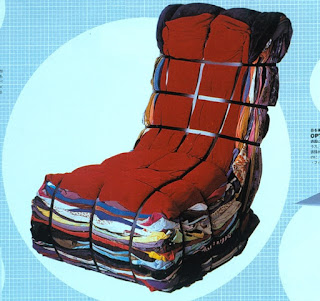Thursday, February 28, 2019
Sunday, February 24, 2019
Thursday, February 21, 2019
Wednesday, February 20, 2019
ever since i bought this baseball shirt, i had this outfit in my head & just needed a pair of white vans. well recently, i went to the mall & got myself some & i was very excited. however, i am dumb & i wore them to my silkscreen studio class. i figured it would be ok bc i wasn't going to be working w ink but i forgot that i would be working w screen filler (something that you shouldn't wear white around). by the end of the day i had little pink/red splatters on my brand new white shoes & i was very upset
i went home & tried to clean it off but no luck so i tried to bleach it. apparently i didn't dilute the bleach enough bc it yellowed/discolored my shoes & i was even more upset. so i found out how to get rid of most of the discoloration (baking soda + water) & while the screen filler spots aren't out, & the shoes might not be as white as they were, at least the discoloration is gone
moral of the story is that sam can't wear white shoes
 |
| long sleeve baseball shirt (thrifted) ripped jeans (hollister) The Kiss- Klimt art socks (amazon) white slip on vans (journeys) |
Sunday, February 17, 2019
Sunday, February 10, 2019
Saturday, February 9, 2019
Tuesday, February 5, 2019
A Seismic Shift in the 1990s: Democratic vs. Conceptual Design
- suggestion that average consumer could access design (democratic design)
 |
| IKEA poang chair, 1990s: $29 |
 |
| campana brothers, vermelha chair 1990s: $12,370 |
 |
| maskros lamp, assemble yourself |
 |
| aeron chair by don chadwick & bill stumpf, 1994 easily adjusted for variety of users unprecedented ergonomic research was very expensive when it came out "dotcom throne" |
- 1990s: fall of Berlin wall, Tiananmen square (crackdown on democracy), Nelson Mandela released, disillusion of USSR, exponential use of internet, etc.
- widespread democratization; target, ikea, crate & barrel became more ubiquitous
- making things more accessible to a wider spectrum of people
 |
| michael graves, architect designer contributed line of work to Target domestic products wheelchair bound--> more aware of ergonomics could create works that would be easier for those who needed |
- 1990s, target approached michael graves (starchitects- star architects- generally stayed away)
- Graves became household name in democratic design
- designers seen as fun & creating nice things, accessible; not unknowable, wild
- rise of star designers
- James Dyson:
 |
| target being inclusive & democractic |
 |
| mcqueen = avantgarde & wild yet still worked w target design trickling down to you & i |
 |
| advertisement, not elite fun industrial design products for all |
 |
| logo has become their identity, don't need their name |
 |
| inclusive, societal change |
 |
| anna sui billboard in times square took it down & created limited edition handbag ($29.99) as to not contribute plastic to environment |
 |
| target is major sponsor of exhibitions at cooper hewitt, national design museum |
 |
| origins: 1943 major expansion cultivated notion of you as the consumer participating in design process ease of construction, affordability, ease of replacing |
 |
| "democratic design" exhibition in Germany bright, egalitarian (scandinavia w socialist government) |
 |
| around the time obama was president conflates image w the campaign |
 |
| backlash on the notion of disposable, throwing away furniture bc easily replaceable, thrown into environment |
 |
| design research, cambridge massachusetts --> crate & barrel, michigan added american flair & color in Scandinavian design |
 |
| crate & barrel in houston |
- products available at crate & barrel
-famous designer Karim Rashid worked w them to create affordable, modern, casual design
 |
| garbo- karim rashid, 1990s plastic garbage can sold it via italian manufacturing firm Umbra instant hit, allowing consumers to buy design on the cheap |
 |
| Oh! chair by karim rashid, 1990s low cost, $39.99 simple shell & snap on legs didn't cost a lot to ship, lightweight |
- consumption- threatening or liberating?
-accumulating things
-putting things into environment
-what does the rise in distribution & availability really do?
- gijs baaker & renny ramakers: droog design
-criteria was flexible, some works were mass produced, some were statements
-got rid of tyranny of 1980s black & chrome, corporate design
 |
| marcel wanders, knotted chair, 1996 familiar, purity, hand craftsmanship combination of high (tech- epoxy resin) & low (references macrame) |
 |
| rage chair- tejo remy, 1990s acquired chair of what we discard simple, readily available materials |
 |
| milk bottle lamp- tejo remy milk crates references to dutch national identity |
 |
| 85 lamps- rody graumans power out of inferiority |
- ikea approached her about vases, she reproduced them in ceramic & sold at affordable price
 |
| drawing table |
 |
| lace table- marcel wanders 1997 epoxy resin |
- 1990s rise in phenomena of star architect & designer
-names used as marketing tools, added value
- Philippe Stark
 |
| child's toy |
- Jasper Morrison
- Alberto M.
- Campana Brothers
 |
| favela (slum) chair doesn't look comfortable, not comfortable to live in a favela |
- Karim Rashid
 |
| worldly designer artist |
- "the strength of designer culture... the popular idea that designers wield magic wands... reached a peak in the 1990s" --> retreat, some designers became more quiet & lowkey
 |
| exquisite & understated packaging design |
 |
| white, simple, quiet |
Subscribe to:
Comments (Atom)







































